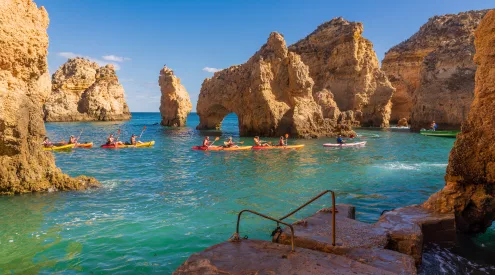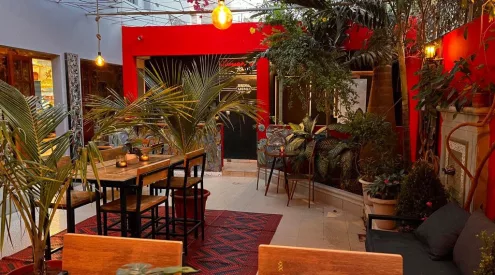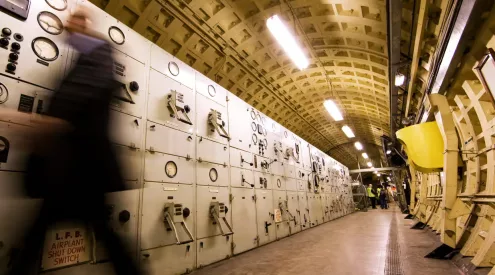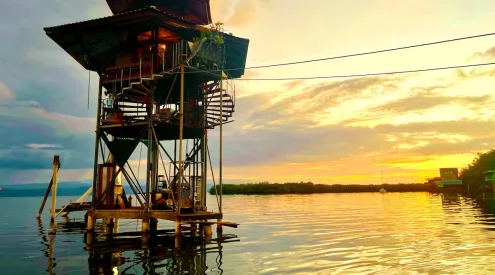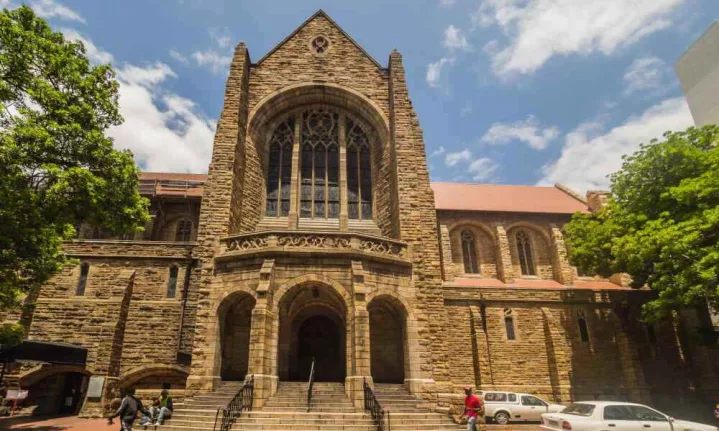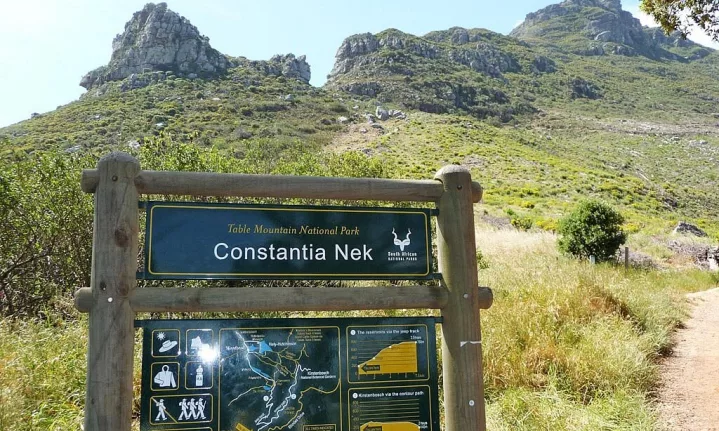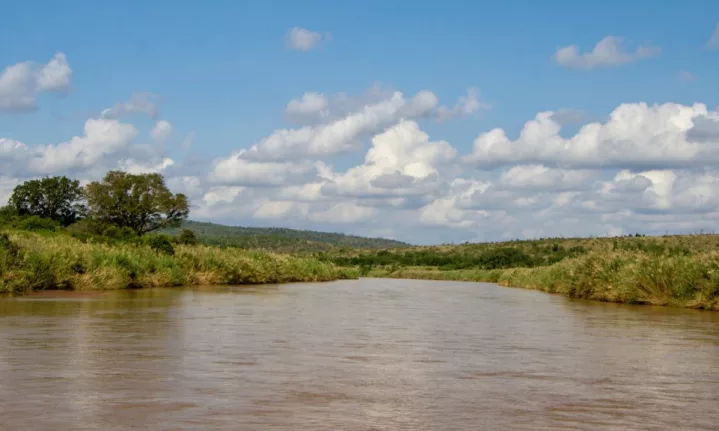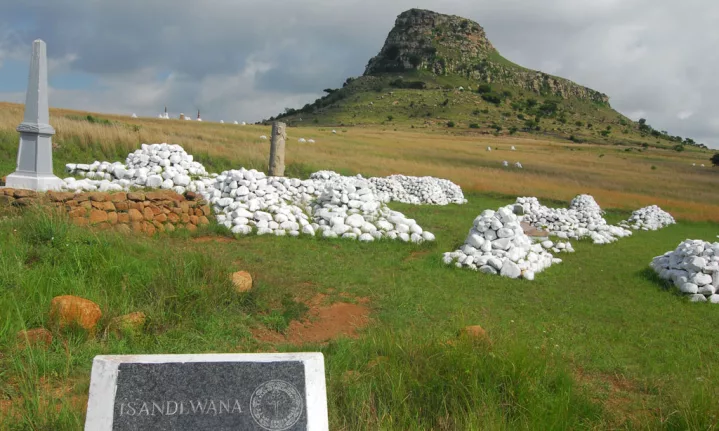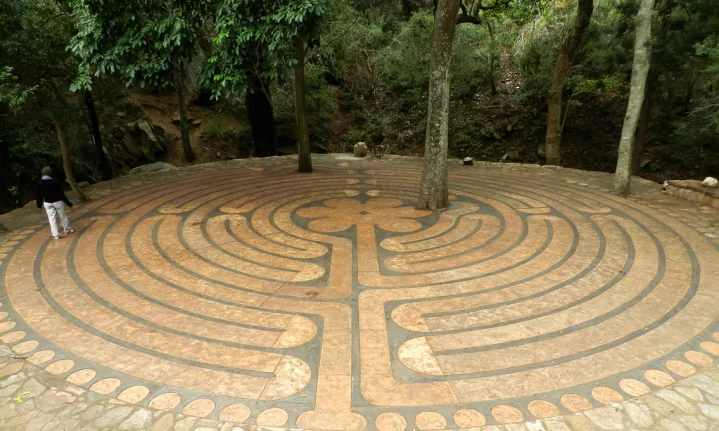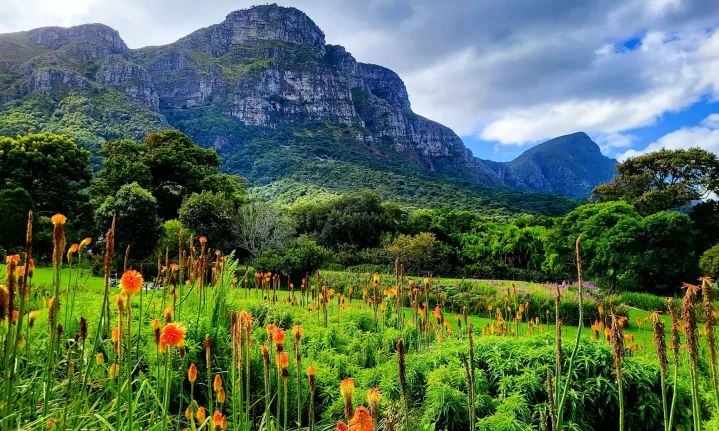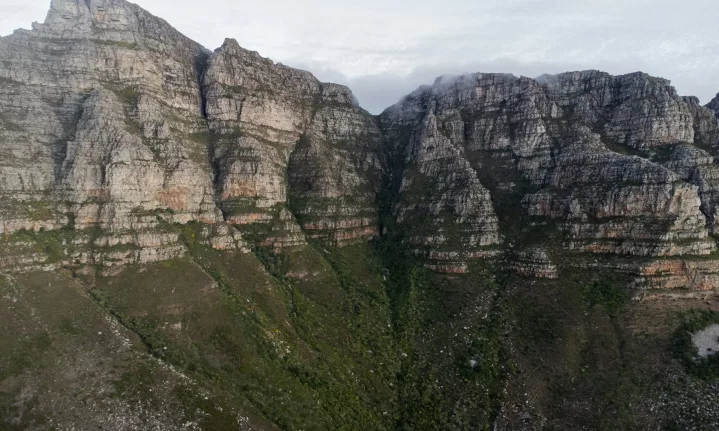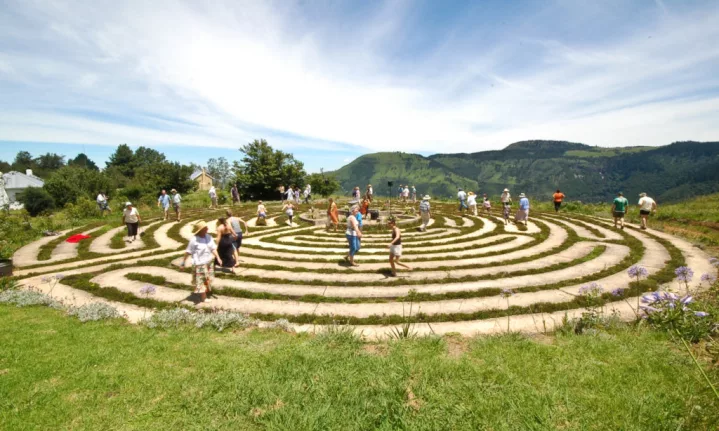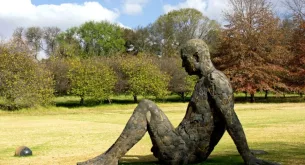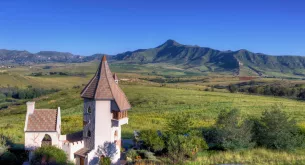South Africa is a land of rich history, cultural heritage, and diverse spiritual traditions. Among its many wonders, some of the most profound experiences can be found in its labyrinths and sacred sites—places where the physical landscape intersects with deep spiritual significance. These sites offer a unique opportunity to connect with the land, reflect on its history, and immerse yourself in the ancient rhythms of the earth.
The Labyrinth at St. George’s Cathedral, Cape Town
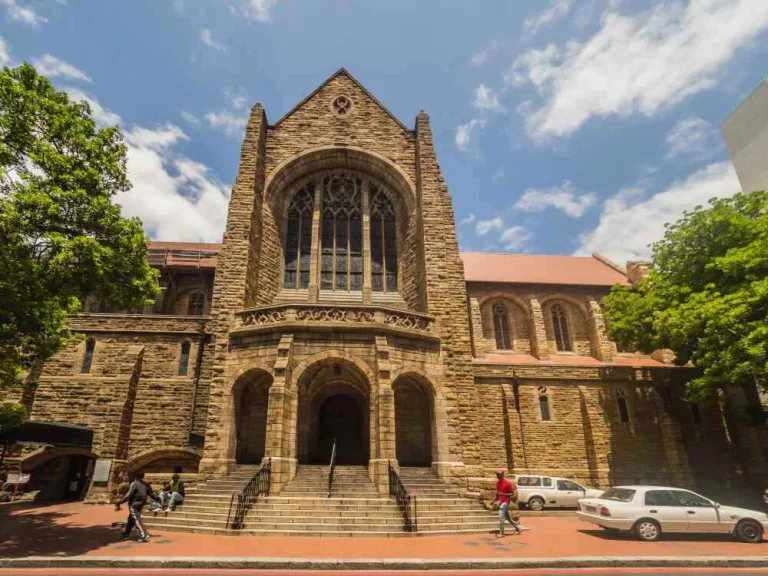
Picture/Cape Tourism
Nestled in the heart of Cape Town, St. George’s Cathedral offers a peaceful sanctuary amidst the city’s hustle and bustle. Its stone labyrinth, located within the cathedral’s garden, is a serene spot for meditation and reflection. The cathedral itself is a historical landmark, famously associated with South Africa’s struggle against apartheid, and its labyrinth is a modern addition designed to promote mindfulness and spiritual reflection. Whether you’re seeking a moment of peace or simply wish to experience the cathedral’s sacred energy, the labyrinth provides the perfect space for introspection.
The Sacred sites of the Khoisan People (Cederberg)
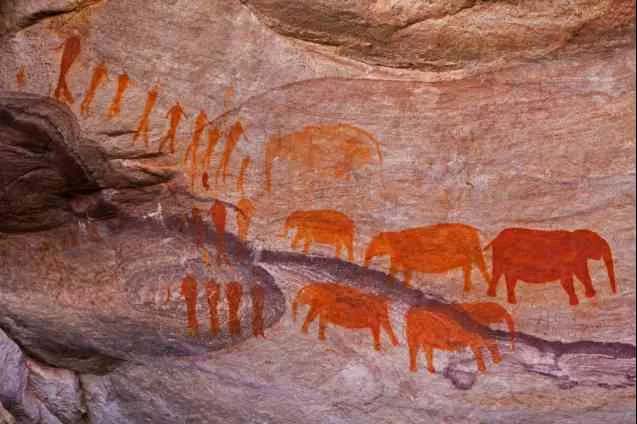
Picture/African Budget Safaris
One of the most remarkable aspects of the Cederberg is its San rock art, which is among the best-preserved in the country. These ancient paintings and engravings are scattered across caves and rock faces in the region and are believed to have served as both spiritual and ceremonial tools. The images, often depicting animals such as elands and springboks, are thought to have been part of Khoisan rituals, representing a connection between the physical world and the spiritual realm.
Some of the most famous rock art sites in the Cederberg include Bushman’s Paintings, Truitjieskraal, and Uitkyk, all of which offer a chance to see firsthand the intricate artistry and spiritual symbols left behind by the Khoisan. These rock art sites are more than just visual artifacts; they are sacred landmarks that continue to hold deep significance for the Khoisan descendants today.
The Labyrinth at Constantia Nek
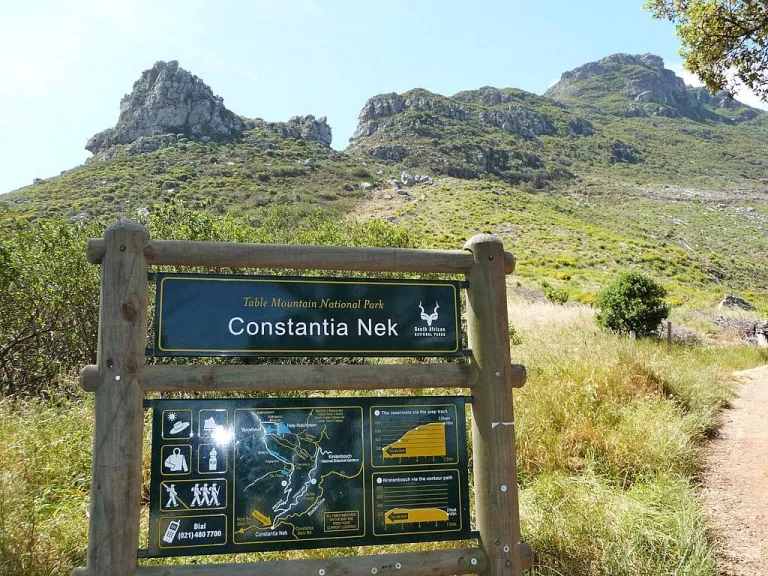
Picture/Tripadvisor
For those looking for a peaceful escape from the city, the labyrinth at Constantia Nek provides an ideal sanctuary. Set within lush gardens, this outdoor labyrinth is designed for quiet contemplation and mindfulness. Walking the labyrinth is not just a physical experience—it’s a spiritual journey, offering a moment to reconnect with nature and find inner peace.
The tranquil surroundings of Constantia, with its rolling vineyards and towering mountains, enhance the sense of serenity, making it an ideal spot for those seeking a more personal and reflective travel experience.
ALSO READ: Exploring natural beauty in the KwaZulu-Natal province
Sacred sites of the Zulu People (KwaZulu-Natal)
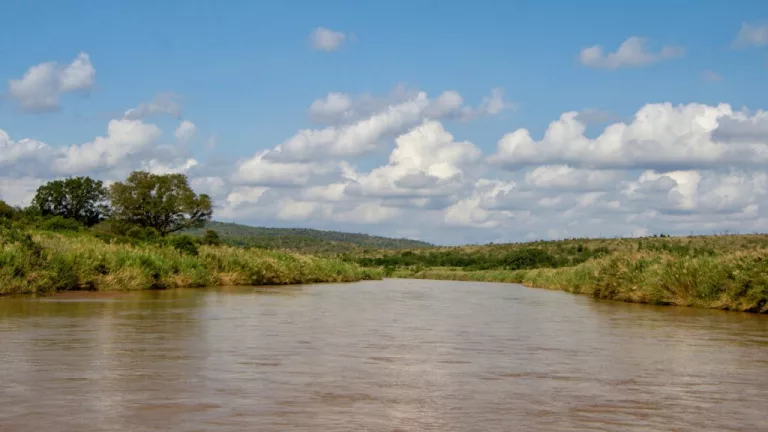
Picture/Jennifer Mostert
KwaZulu-Natal, a province rich in Zulu heritage, is home to several sacred sites that hold deep spiritual significance for the Zulu people. Among these is the Umfolozi River, which flows through Zululand, revered as a site of ancestral worship. In Zulu culture, rivers like the Umfolozi are considered sacred, believed to be the living embodiment of ancestral spirits.
Visitors to Zululand can gain insight into the deep spiritual practices of the Zulu people, with several cultural tours offering the opportunity to visit these sacred rivers and learn about the rituals that continue to be performed at these sites.
The Battlefields of KwaZulu-Natal
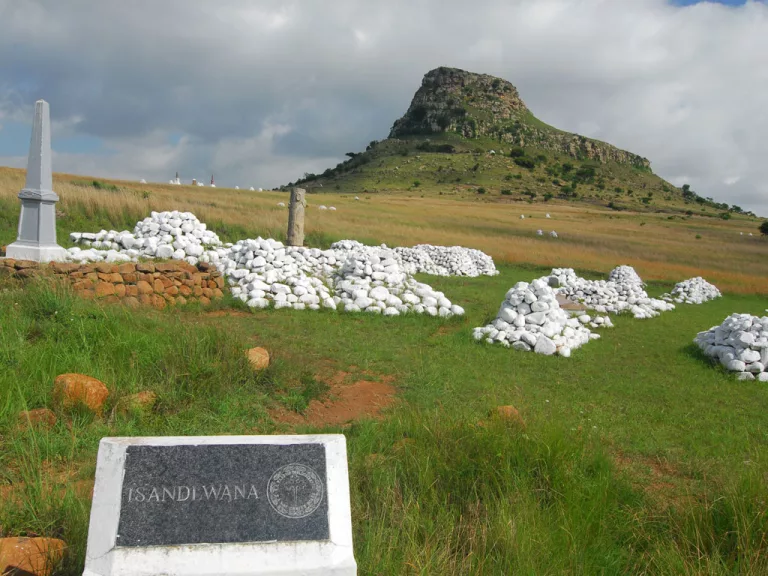
Picture/Fugitives Drift Tours
KwaZulu-Natal is also home to the famous battlefields where key events in South Africa’s history unfolded, particularly during the Anglo-Zulu War. Sites like Isandlwana and Rorke’s Drift are not just historical landmarks but are considered sacred ground by the Zulu people, honouring the lives lost and the bravery displayed in these battles.
These battlefields are an important part of South Africa’s collective memory, and many visitors come to reflect on the lives of the warriors who fought there, paying tribute to their ancestors and the land they fought to protect.
The Boondocks Labyrinth (Mpumalanga)
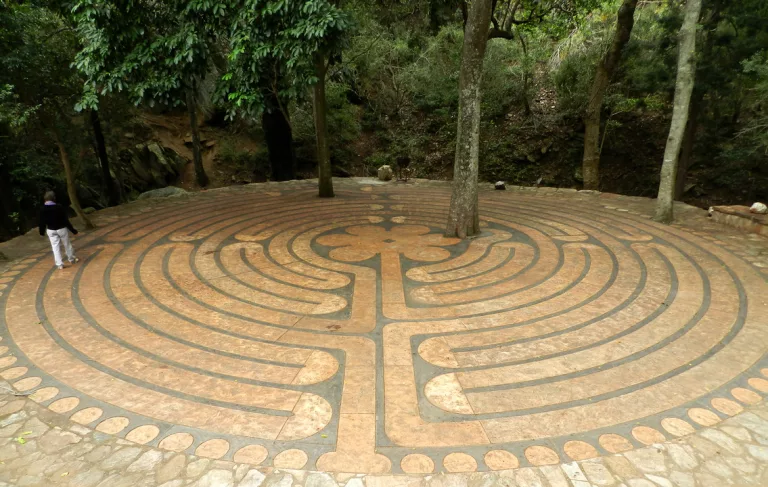
Picture/SA Venues
Tucked away in the lush mountains of Mpumalanga, the Boondocks Labyrinth offers a deeply spiritual escape for those seeking solitude, reflection, and connection. Part of the Boondocks Mountain Lodge, this labyrinth is designed to be a sacred walking meditation space surrounded by indigenous forest and rolling hills.
It’s based on the classic seven-circuit design and encourages visitors to slow down, breathe deeply, and reconnect with themselves and nature.
Steeped in tranquillity, the Boondocks Labyrinth has become a destination for wellness seekers and spiritual travellers alike. The surrounding area, rich in biodiversity and traditional healing knowledge, adds to its sacred ambience.
The Labyrinth at The Edge Mountain Retreat (Hogsback, Eastern Cape)
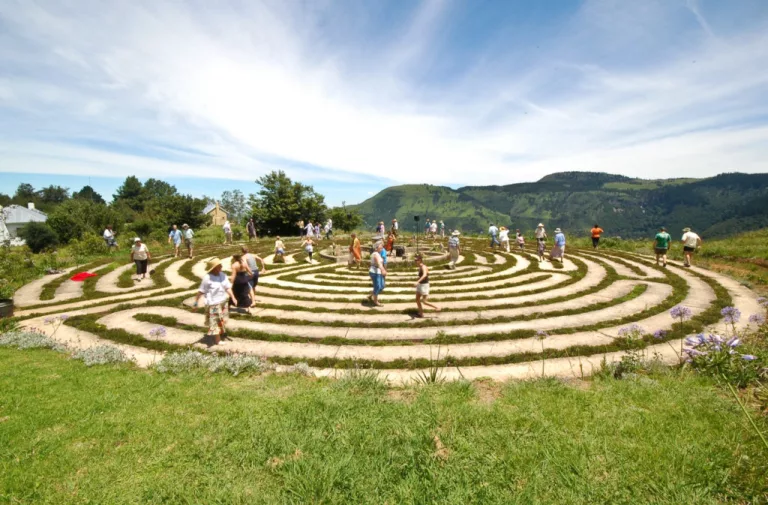
Picture/Terra Khaya
The Hogsback Labyrinth is a remarkable site that combines natural beauty with spiritual reflection. Situated on the edge of a cliff, it offers panoramic views of the Amatola Mountains and the surrounding valley, creating a serene environment for contemplation. Visitors are encouraged to walk the labyrinth as a form of meditation, allowing the journey to the centre and back to foster introspection and peace. The surrounding gardens, filled with diverse flora, enhance the tranquil experience.
The Labyrinth at the Kirstenbosch National Botanical Garden
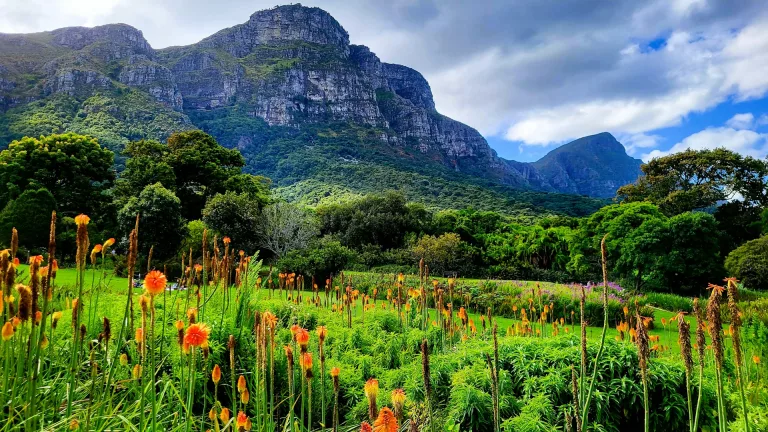
Margit Umbach/Unsplash
The Kirstenbosch National Botanical Garden is home to a beautifully crafted stone labyrinth. Situated against the backdrop of Table Mountain, this labyrinth offers visitors a chance to walk amidst the stunning flora of one of the most famous botanical gardens in the world. The labyrinth is designed as a meditative space, providing a tranquil escape from the bustling city life.
Sudwala Caves (Mpumalanga)
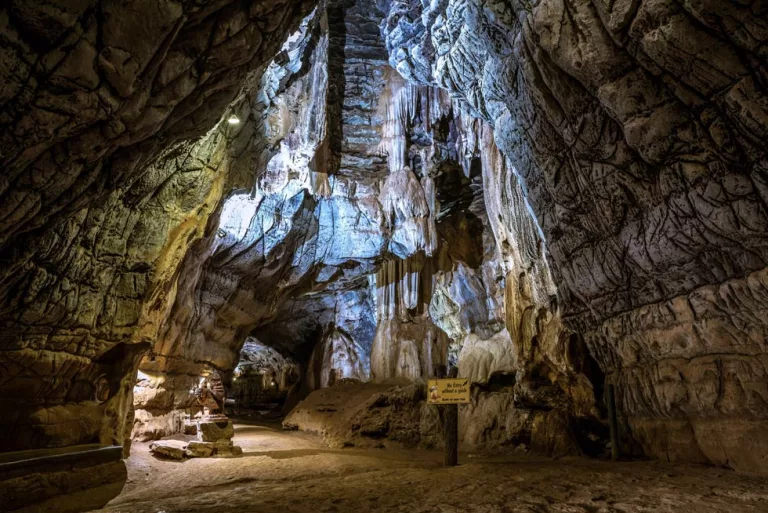
Picture/Sudwala Caves
The Sudwala Caves, located in Mpumalanga, are among the oldest known caves in the world, estimated to be over 240 million years old. These caves have been used by humans for shelter and spiritual practices for thousands of years. The natural rock formations, including stalactites and stalagmites, create a cathedral-like atmosphere that has inspired awe and reverence across generations. Visitors can explore the vast chambers and learn about the caves’ rich history, including their use by early humans and their significance in local folklore.
The Sacred Mountain of Hoerikwaggo
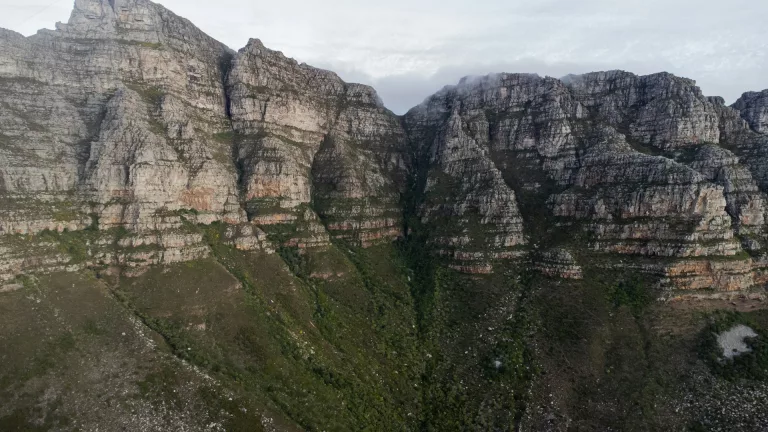
Jolame Chirwa/Unsplash
Table Mountain is not only a natural wonder but also holds deep cultural and spiritual significance for the indigenous Khoikhoi people. Known as “Hoerikwaggo”, meaning “mountain in the sea,” Table Mountain has long been a sacred site where ancient rituals were conducted. It is a powerful symbol of the connection between the land and its people, and many believe the mountain possesses a spiritual energy that can be felt by those who visit.
Follow us on social media for more travel news, inspiration, and guides. You can also tag us to be featured.
TikTok | Instagram | Facebook | Twitter
ALSO READ: A search for the most unusual UNESCO World Heritage sites


